Shahrzad & the Angry King
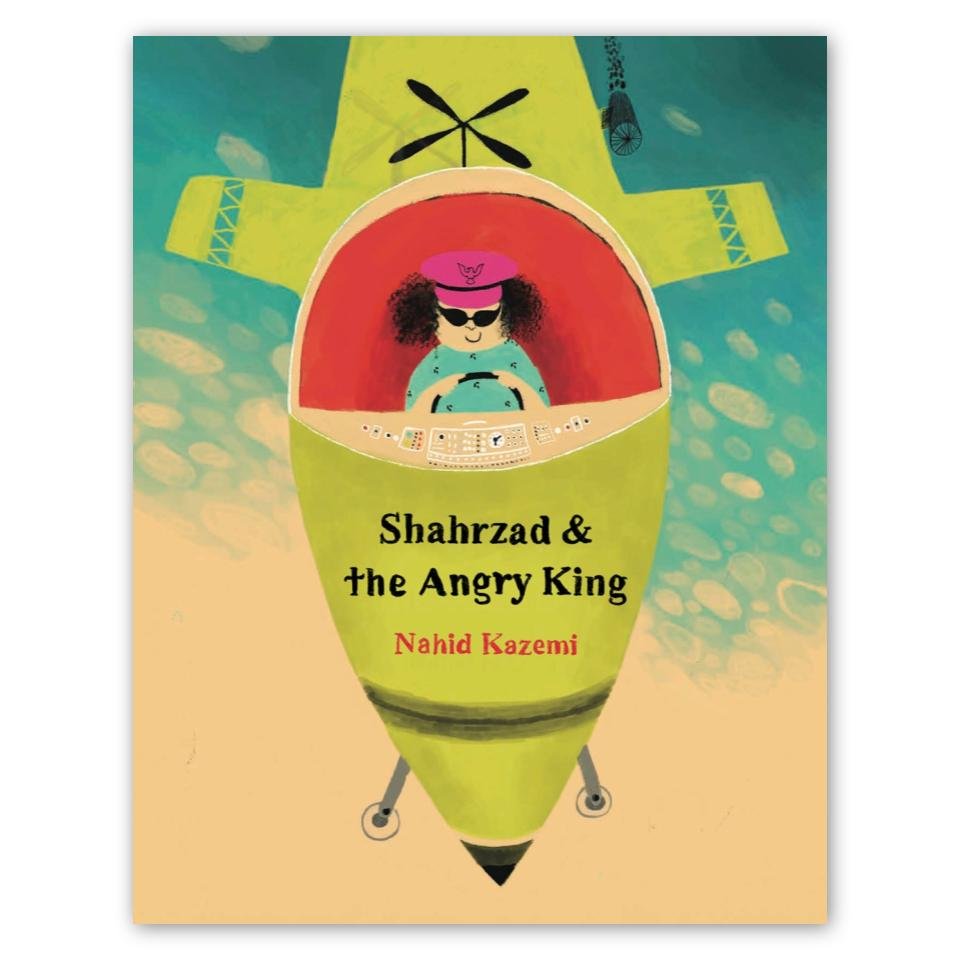
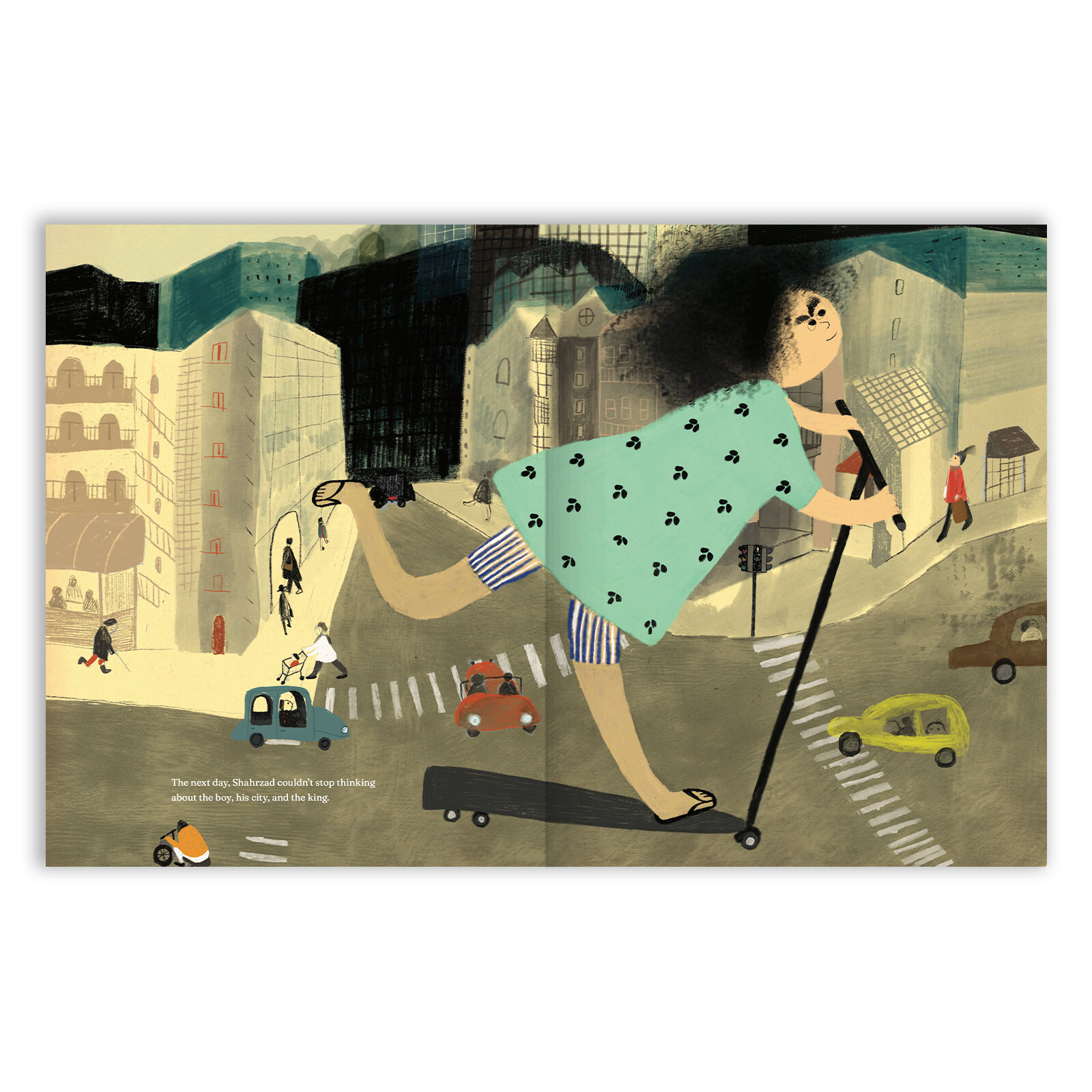
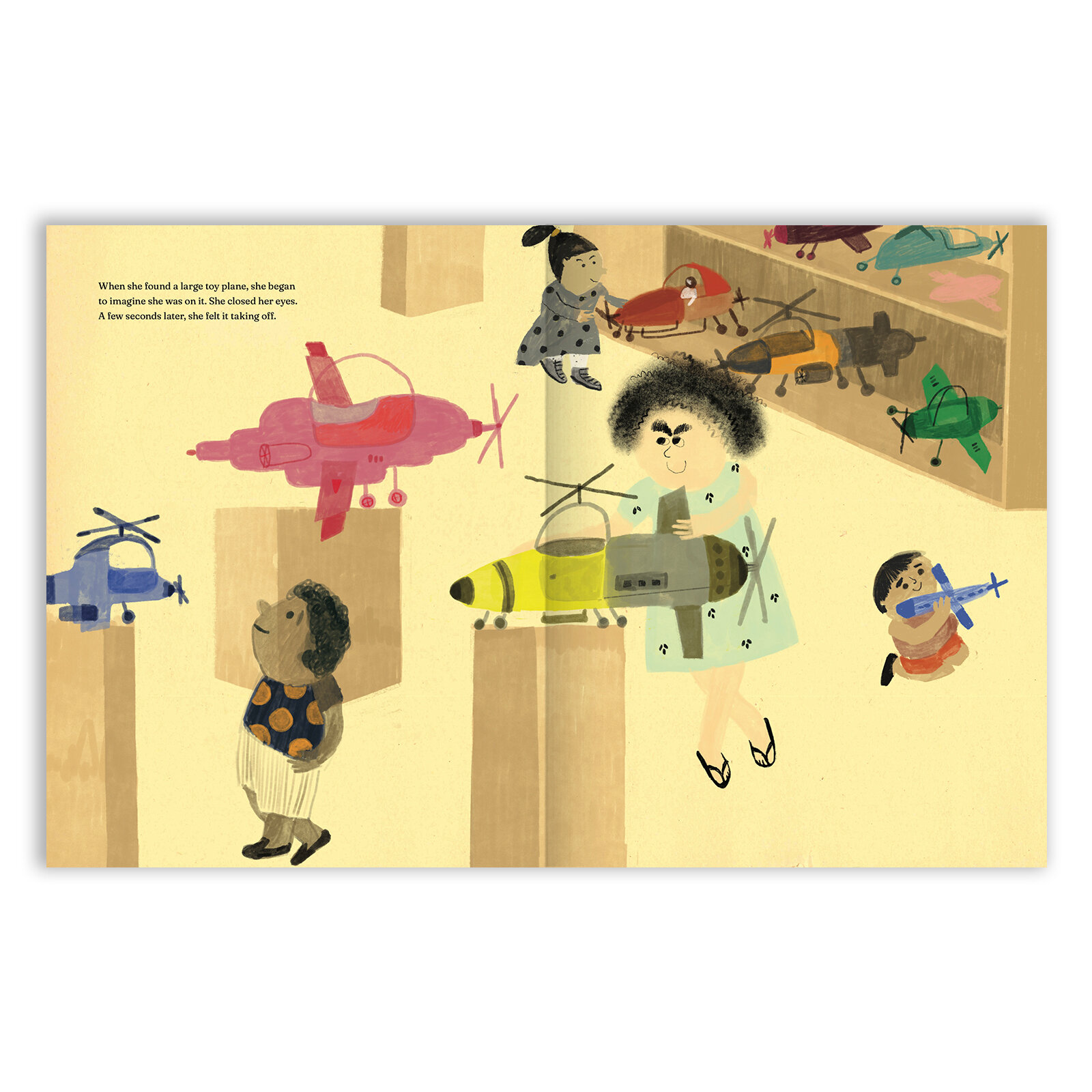


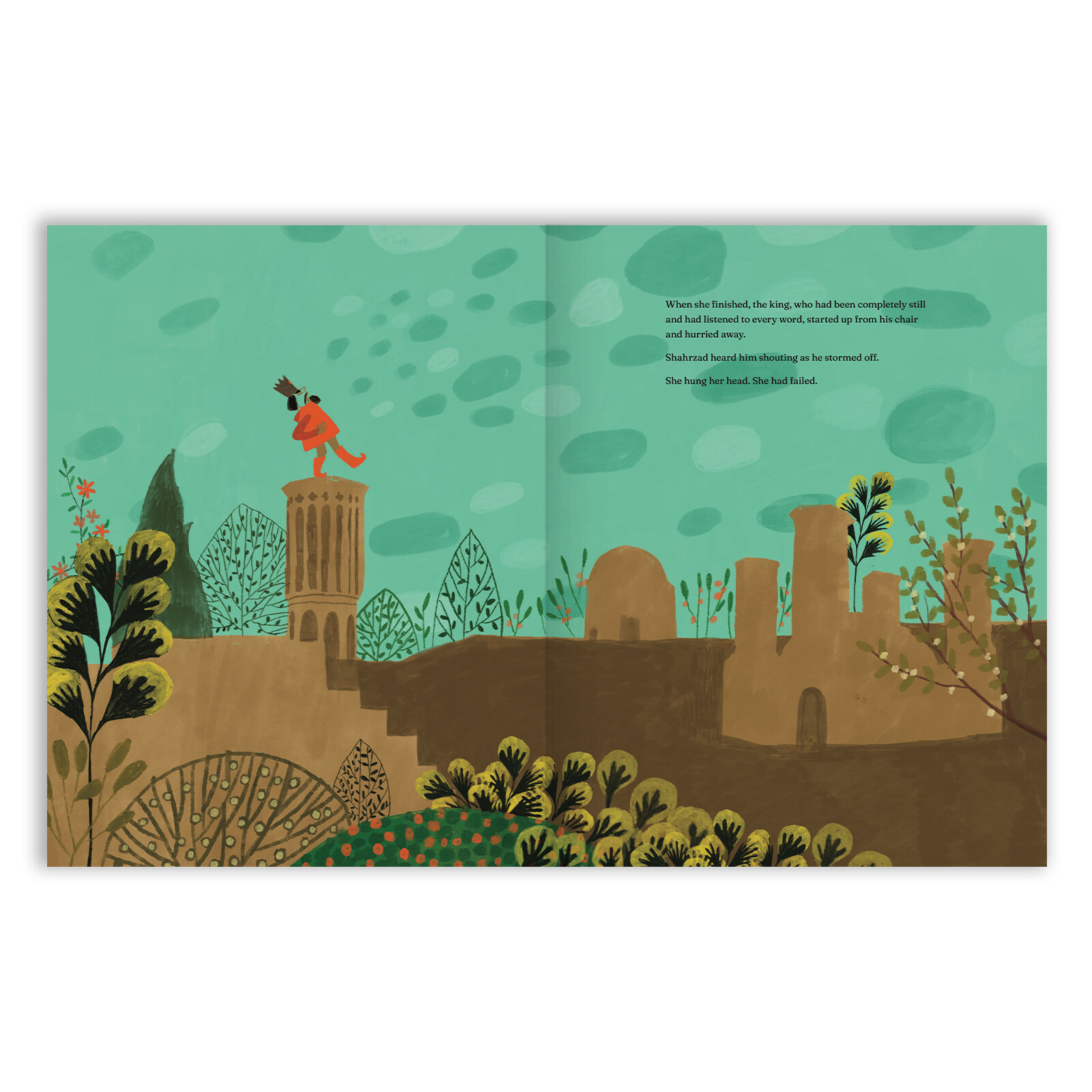
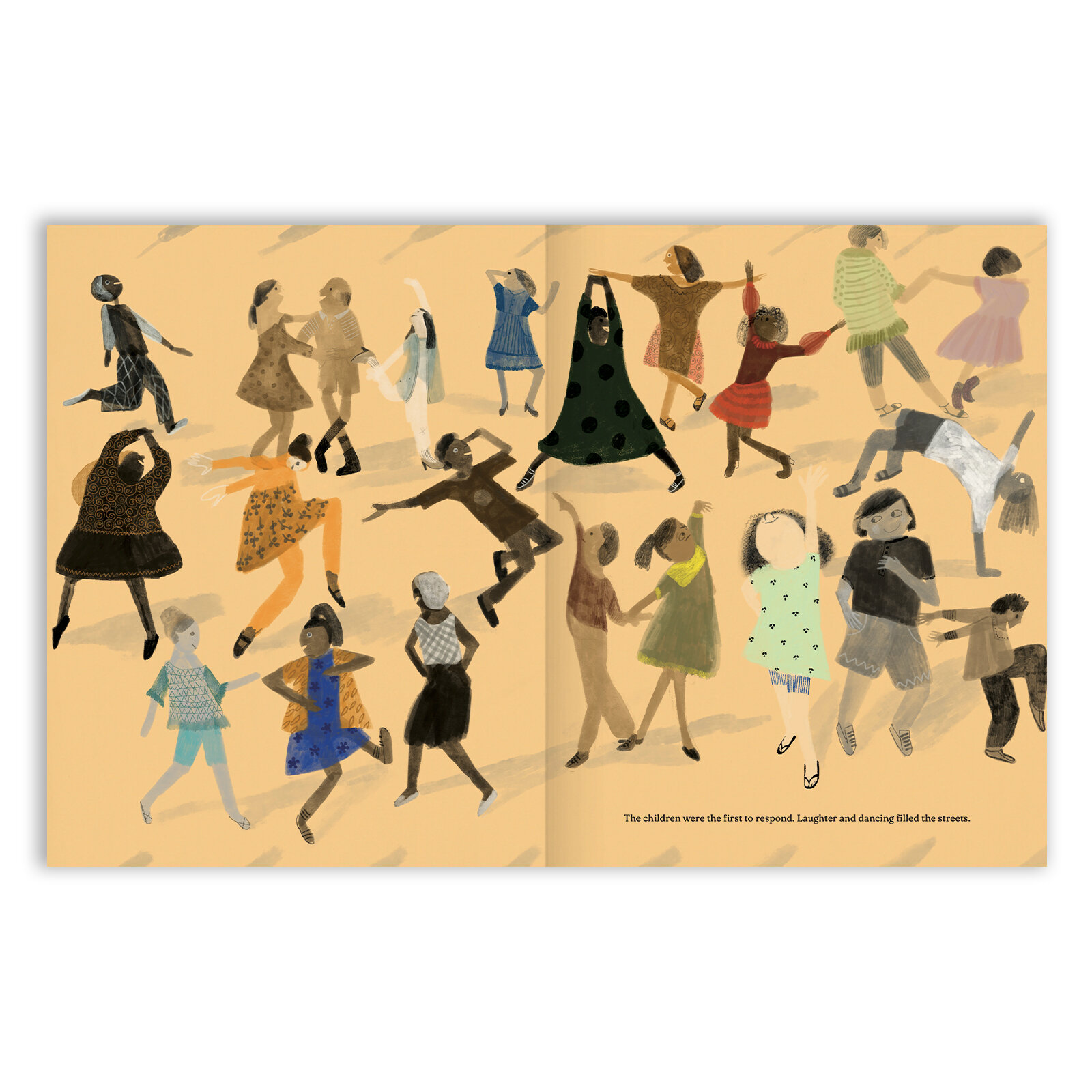
Shahrzad & the Angry King
*This title will also be available on Bookshop, an organization that supports independent bookstores!
Written and illustrated by Nahid Kazemi
A Kirkus Reviews Best Beginning Reader of 2022!
In this reimagined Scheherazade tale, story-loving, scooter-riding Shahrzad meets a boy who recounts fleeing from his home, where the king has grown angry and cruel. Shahrzad imagines herself zooming off in her toy airplane to confront the king. She tells him story after story, making him reflect on the kind of leader he really wants to be. Brought to life by Iranian artist Nahid Kazemi, this bold heroine reminds us of how powerfully intertwined reality is with the stories we tell.
ISBN: 978-1-59270-352-4
8.75” (W) x 12” (H) • 80 Pages • HCJ
AWARDS AND REVIEWS
A Kirkus Reviews Best Beginning Reader of 2022!
Selected for the Children Book Council’s Summer 2024 Showcase: Imagination Celebration
★ “This rich tale is, by turns, realistic and magical. Readers journey with Shahrzad as her imagination takes flight via a toy airplane. Her encounter with the angry king hones her narrative powers while enabling the king to transcend his prolonged grief and revoke his harsh laws. The illustrations convey Shahrzad’s probing wit and a youngster’s whimsical representation of the story world, which includes a reference to One Thousand and One Nights (or ‘maybe it was just ten’). While Shahrzad wears the same dress throughout the book, her appearance varies, alternating in scale and vantage point, thereby raising an intriguing question about the protagonist’s perspective. Are we seeing her as a ‘girl’ or as a writer recalling her own childhood memories? In this manner, the overall narrative invites us to ponder the nature of time as both cyclical and linear. Clever construction and intertextual inspirations weave a thought-provoking homage to a fabled heroine and master storyteller.” —STARRED REVIEW, Kirkus
★ “Tender, empathetic, and unflappably hopeful, this is the retold story of Scheherazade. In this version, set in contemporary times: Shahrzad’s curiosity is insatiable. She loves forming what she sees into enchanting tales. When she meets a young refugee, she learns about a king whose grief made him cruel; she imagines how the king might change, if only he could put himself in his subjects’ positions. The book’s rough, mixed-media illustrations further suggest the power of unbound creativity in bringing about a kinder world.” —STARRED REVIEW, Foreword Reviews
“A gentle and beguiling picture book with a spirited child heroine at its heart, Shahrzad & the Angry King is a fable for our troubled times... Shahrzad’s tale is very short, the story simple; its words are sparse, its drawings disarmingly naïve. But this seeming artlessness skillfully blends many kinds of storytelling, from observation to fantasy. When Shahrzad makes her first appearance in the book, she’s acting like a journalist (think the boy reporter Tintin), a witness, even a child spy... Then she starts to ‘regale others’ with stories she has heard, inspiring some of Kazemi’s most affectionate drawing. The attitudes struck by the listeners... are wonderfully observed, economical and lighthearted, displaying the carefree bravura of celebrated illustrators such as Quentin Blake and Charlotte Voake... One day she comes upon a young boy [whose] family have had to flee their home, suffering under a tyrant’s cruel oppression... The woebegone boy’s fate affects Shahrzad deeply. She imagines herself in his shoes, and this empathy gives her a mission. To achieve it, reportage and bardic chronicling won’t suffice; Shahrzad turns instead to imagination and daydreaming. She flies into the presence of the angry king himself, stepping firmly into her namesake’s role. With this confrontation, Kazemi mobilizes two vital dynamics of the original folk tale. First, Scheherazade holds a mirror up to Sultan Shahryar, giving him one example after another of princely conduct—and misconduct—according to the medieval genre of handbooks for rulers. Second, she enacts the ancient principle of bringing about recognition (anagnorisis). It’s no good trotting out examples if your target audience doesn’t see itself portrayed, exposed and shamed… Eventually, much to her surprise, Shahrzad finds she has succeeded. The king revokes his cruel laws and the people are once again free to dance, giving Kazemi another opportunity for a double-page spread of buoyant, inventive drawing, ecumenical as to body shapes, with expressive gestures, poses, leaps, struts and general élan. Shahrzad will tell the boy her daydream to give him hope. At the close, she sets about writing it down. That is the plan and the wish of this story, and it goes to the heart of fairy tales, which are, as Italo Calvino put it, ‘consolatory fables.’“ —New York Times
“In this Scheherazade variation, its storyteller heroine becomes a modern child: Shahrzad, an inveterate eavesdropper who loves stories… When a boy at a park tells Shahrzad that he and his family have had to leave their country because their grief-stricken king passed laws that make life unbearable, Shahrzad imagines herself flying in a toy plane straight to the palace to confront the monarch. Art by author-illustrator Kazemi appears scribbly and informally stylized, with subtly expressive characters and spreads that are alive with texture and color. As Shahrzad dazzles the king day after day with tales that prod him to consider the consequences of his actions, Kazemi illuminates the storyteller’s gift (and the book’s own): the ability to juggle different points of view, and to use stories as visions for change.” —Publishers Weekly
"Shahrzad, a little girl with black corkscrew hair, beetling brows, and a trusty scooter, likes stories. She seeks them out and tucks them away. One day she hears about a king in a distant land whose personal sorrows have turned him into a tyrant. This is her moment... This wise and witty riff on the Scheherazade framing tale of The Arabian Nights merges everyday and fairy-tale worlds, with respect for the traditional job of folklore to encourage us to shape up and fly right. The pictures are energetic, with a wide-ranging cast of characters, cheeky humor (Sharzad gets in some thinking time while sitting on the toilet), and Chagall-like warmth and exuberance. A dark undertone and contemporary political resonance are there for those who are ready for it, but for everyone it’s an original contribution to picture books about smart girls who save the world." —The Horn Book
“Kazemi’s version of the legendary tale of Sheherazade starts with a girl who loves stories. In a modern setting, Shahrzad, with fuzzy black cropped hair and caterpillar-like black eyebrows against pale skin, listens for stories everywhere and then recounts them to others. When she hears about an angry king who creates cruel laws, she steps in. Through daily doses of storytelling, each one building on the last, she is able to make the king become kind, with her last story telling him of himself, the grief for his late wife that has made him mean, and his reform…Readers are invited into the secret, that this tale, and all the stories of the Arabian nights, here flattened into a child’s whimsical love of storytelling, have lessons for us all. Although readers are left wondering what was Shahrzad’s dream, and what was real, this sweet book captures the power of storytelling and the fun of creative imagination. Pastel illustrations create a calming sense at times and dynamism in other scenes.” —School Library Journal
"Kazemi, an Iranian-born artist and writer uses the framing of the original story of Scheherazade from 1,001 Nights to craft this allegorical story about trauma, grief, and the healing power of stories... The large oversized pages feature idiosyncratic scribbly drawings with a moody palette (Shahrzad always appearing with pronounced dark eyebrows and a mop of black ringlets), featuring warm browns, reds, and oranges, punctuated by bright jewel-toned accents. The illustrations manage to combine sophistication and a child-like simplicity; the compositions are often complex, as is the framing, but the shapes and faces are often simple. The drawings ... look like old-fashioned lithographic prints, with their smoky, spongy shapes, accented with fine lines for detail. Other times they look like watercolor, using translucence and brushstroke to great effect." —Susan Harari (Keefe Library, Boston Latin School), Youth Services Book Review
“Shahrzad & the Angry King shines with lessons on altruism, empathy and the transformative power of a good story… Kazemi’s belief that stories shape how we perceive other people and the world runs through the subtext of the book. Through storytelling, it is possible for people to learn to think differently, act differently. Kazemi is convincing in her point of view that people of all ages can benefit from stories of courage and compassion, of kindness and generosity, of justice and fairness. Kazemi is a gifted artist. The artwork has just as much of a transformative effect on the reader as her words. Shahrzad’s personality, emotions, and energy shine through each page as does her impact on her listeners. Shahrzad & the Angry King is another marvelous book in the pantheon of great books by celebrated family-owned publisher, Enchanted Lion Books.” —International Examiner
